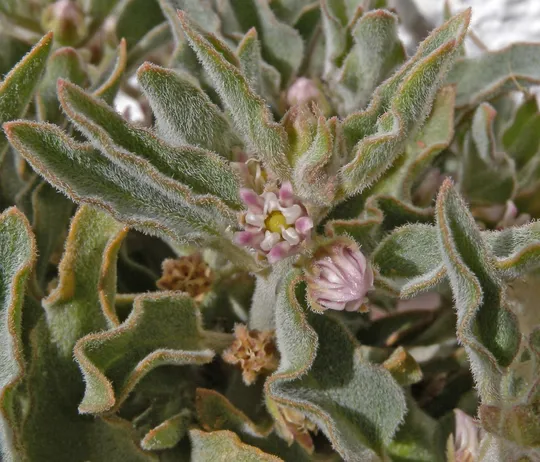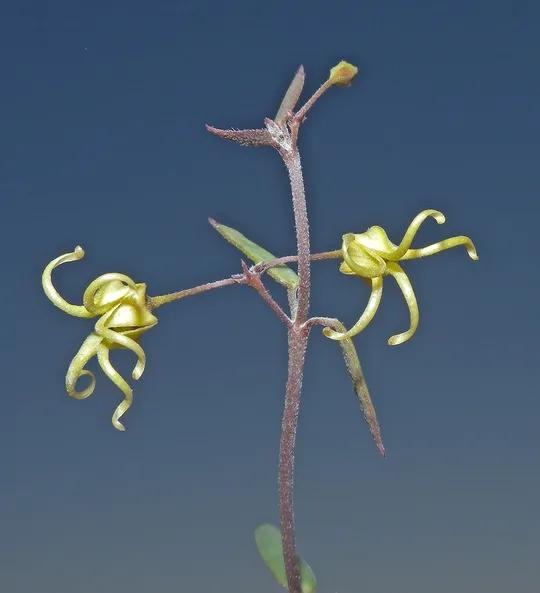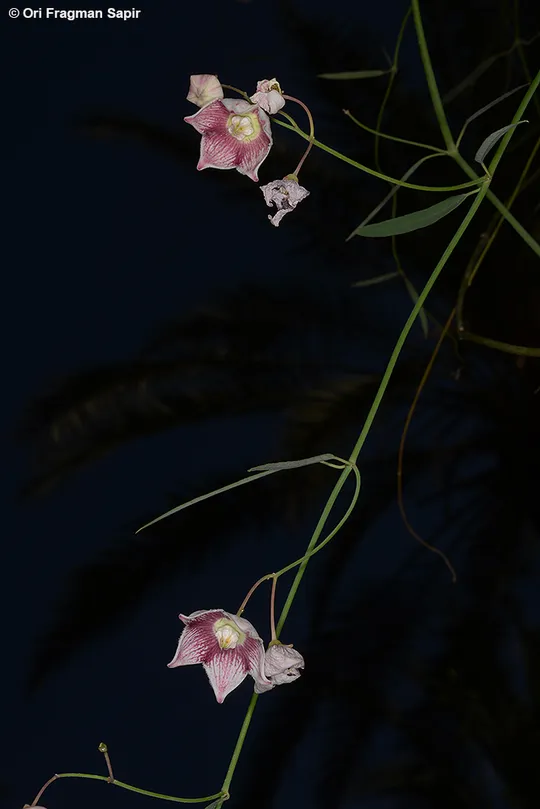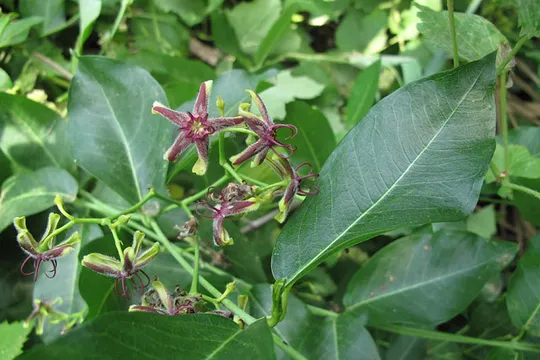Spear-leaved Dogbane
Trachomitum venetum
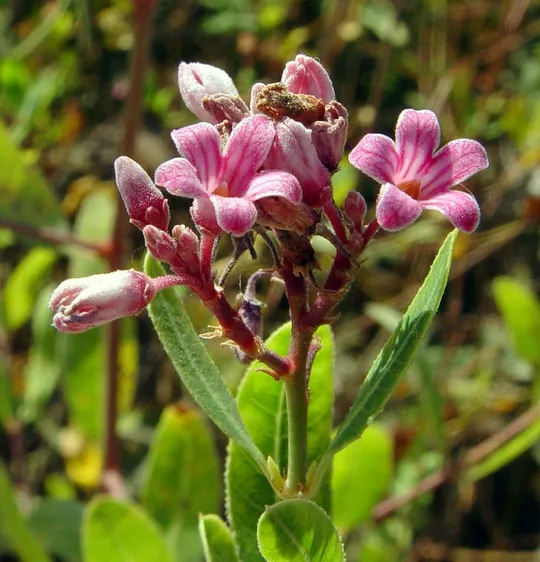
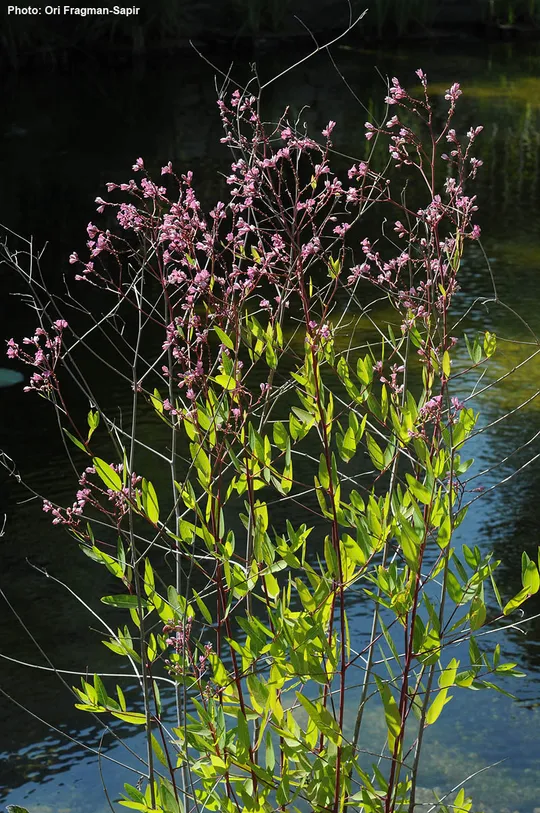
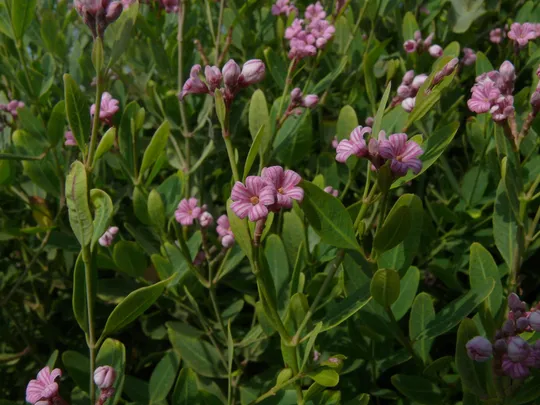
Trachomitum venetum
grows today in the Acre Valley and on the Carmel Coast at seven
sites. In the Acre Valley, there are two sites in the Na'aman Stream area: En Namfit and Kare Na'aman. On the Carmel Coast,
there are five sites in the Dalya Stream Marsh, Ma’ayan Tsvi and Ma’agan Mikhael fishponds and near the beach. The T. venetum population found and collected in the 1920s in the
Kebara Marshes in the Carmel Coast region is now extinct. T. venetum
grew in the Northern Negev at least until the end of the 1960s at
a single site in En Ovdat, but since the great flood of 1968, it has become
extinct there.
Stream banks, canals and wetlands.
The genus Trachomitum includes six species, mostly in Eurasia.
T. venetum apparently originates in the eastern
Caspian Sea area and its global distribution is fragmented. Its previous range
in Israel was also fragmented: in addition to the wetland populations on the
Carmel Coast and the Acre Valley, there was once a local population in the
Negev at En Ovdat. Such a disjunct distribution pattern between the coastal
plain on one hand and the Negev on the other exists in a number of other species,
e.g. Suaeda vera, Elytrigia elongata and Limonium narbonense.
There are two possible explanations for this fragmentation – long-distance dispersal
and indeed, in T. venetum (and in many other wetland
species) dispersal via seeds with a well-developed pappus could support this
hypothesis. An alternative explanation, based on biogeography, assumes an
ancient connection expressed by the existence of a continuous system of streams,
swamps and salt marshes between the Negev and the coastal plain in the rainy Pliocene.
Subsequent climate warming and the modification of the watershed location that
diverted the drainage of Upper Wadi Tsin to the Dead Sea region – caused this
connection to be lost and fragmentation to occur (Schmida and Rontal, 1985).
This explanation is consistent with the classic biogeographic paradigm that
assumes that fragmented distributions are primarily the result of areal fragmentation
due to climate change. If indeed this is the case, T. venetum illustrates the case a northern
relictual group, which was found throughout the Mediterranean region at the end
of the Pliocene and during the Pleistocene glacial periods. As the climate dried
in the Holocene the species retreated northward, leaving fragmented centers of
distribution around the Mediterranean Basin (Medail and Quezel, 1997; Thompson,
2005).
·
The range of Trachomitum venetum
in Israel is contracting, and the number of regions it is found in decreased
from three to two. The plant has become extinct from the En Ovdat site in the Negev.
·
Estimated populations sizes are between hundreds and thousands,
and T. venetum sometimes grows in dense clumps.
·
Declining water levels, desiccation and physical changes
in the Dalya Stream Marsh and in the Ma’ayan Tsvi fishponds could endanger the Carmel Coast populations.
The reasons for its extinction at En Ovdat are unknown.
·
T. venetum is protected in the En Namfit nature reserve. The Kare
Na'aman and Dalya Stream populations are located in undeclared reserves. The
populations that have become extinct from En Ovdat were located within the
boundaries of a nature reserve.
·
There is a lack of information regarding the threat
status of T. venetum in Asian countries. In Bulgaria, it is classified as
"Endangered” and in the Red Book of Plants in Cyprus it is classified as
"Critically Endangered" (CR).
A suitable water level in the Dalya Stream Marshes
should be maintained and the site should be officially declared a nature
reserve. Attempts should be made to locate Trachomitum venetum
at En Ovdat or to acclimatize it there. As it is easy to root T.
venetum stem sections, attempts should be made to grow it
in refuge gardens as a source for reintroduction. Nothing is known about T. venetum
pollination; therefore potential pollinators should be
investigated to verify if it relies on a specific pollinator.
Trachomitum venetum
grows in Europe in the Balkan countries and in Southeastern
Europe. In Asia, it is found in temperate areas from Anatolia in the west to
China in the east. It also grows in Australia.
Trachomitum venetum is a rare perennial marsh plant that
grows on a few sites on the Carmel Coast and in the Acre Valley. It is extinct
in the northern Negev.
שמידע, א. ורונטל, ב. 1985. צמחים רליקטיים מחוף הים התיכון בעיינות מצוק הצינים בנגב. רתם 17: 19-26.
Medail, F. and Quezel, P.1997. Hot-spot analysis for conservation of plant diversity in the mediterranean basin. Ann. Missouri Bot. Gardens, 84: 221-247
Thompson J.D. 2005. Plant Evolution in the Mediterranean. Oxford Univ. Press
Current Occupancy Map
| 1000 squre meter pixel | 5000 squre meter pixel | 10000 squre meter pixel | |
|---|---|---|---|
| number of observations | 0 | 0 | 0 |
| in total pixels | 0 | 0 | 0 |
| Family | Asclepiadaceae |
| Classification | On the endangered species list |
| Ecosystem | Mediterranean |
| Chorotype | Eastern Mediterranean – Euro-Siberian (Western Irano-Turanian) |
| Conservation Site | Dalya Stream Swamp, Ma’ayan TsTsvi Fish Ponds, En Namfit and Karei Na'aman |
| Rarity |
1
3
6
|
|---|---|
| Vulnerability |
0
2
4
|
| Attractiveness |
0
1
4
|
| Endemism |
0
0
4
|
| Red number |
1
3.7
10
|
| Peripherality | N |
| IUCN category | DD EW EX LC CR EN VU NT |
| Threat Definition according to the red book | Vulnerable |
 Based on:
Based on:
